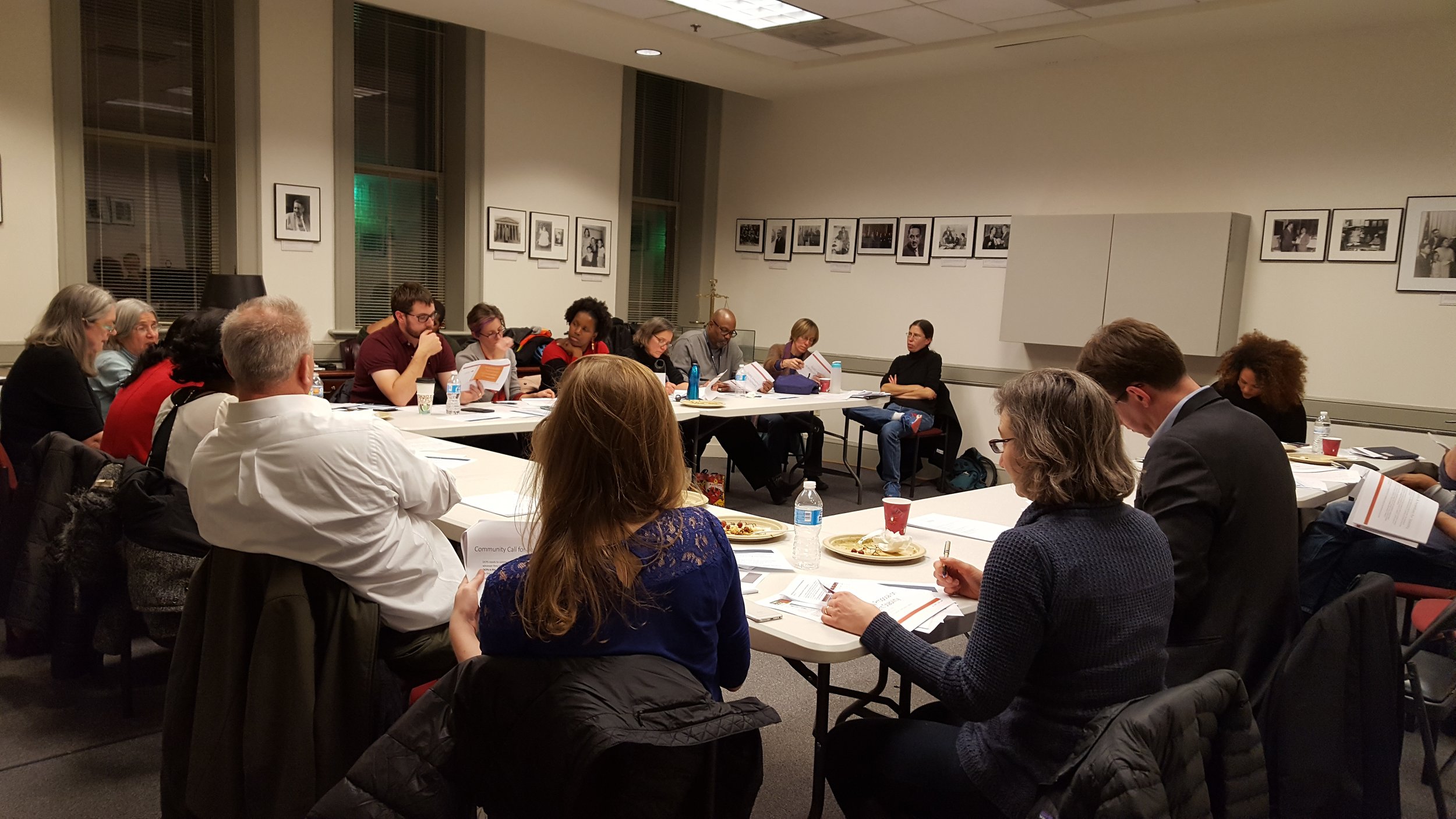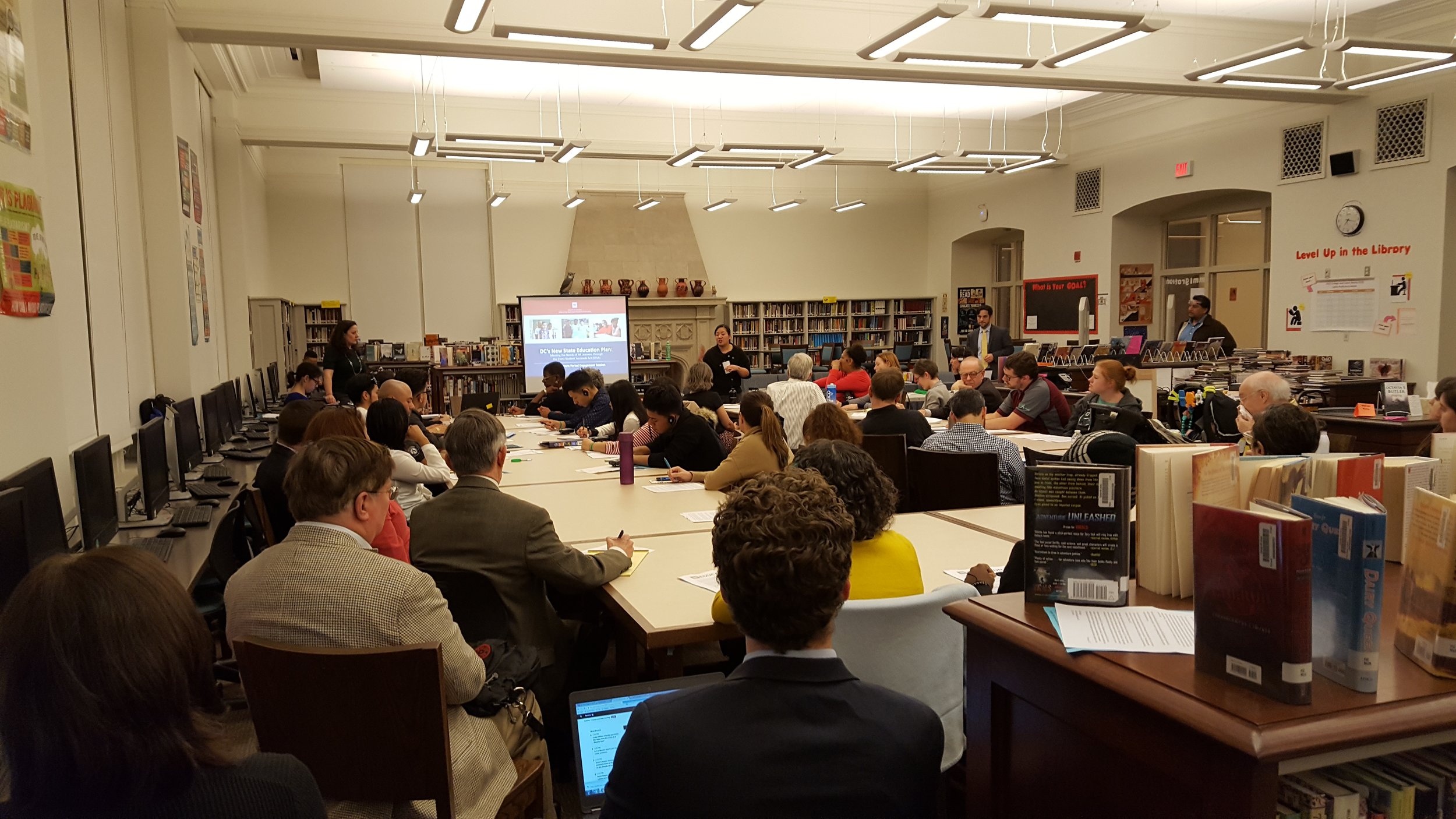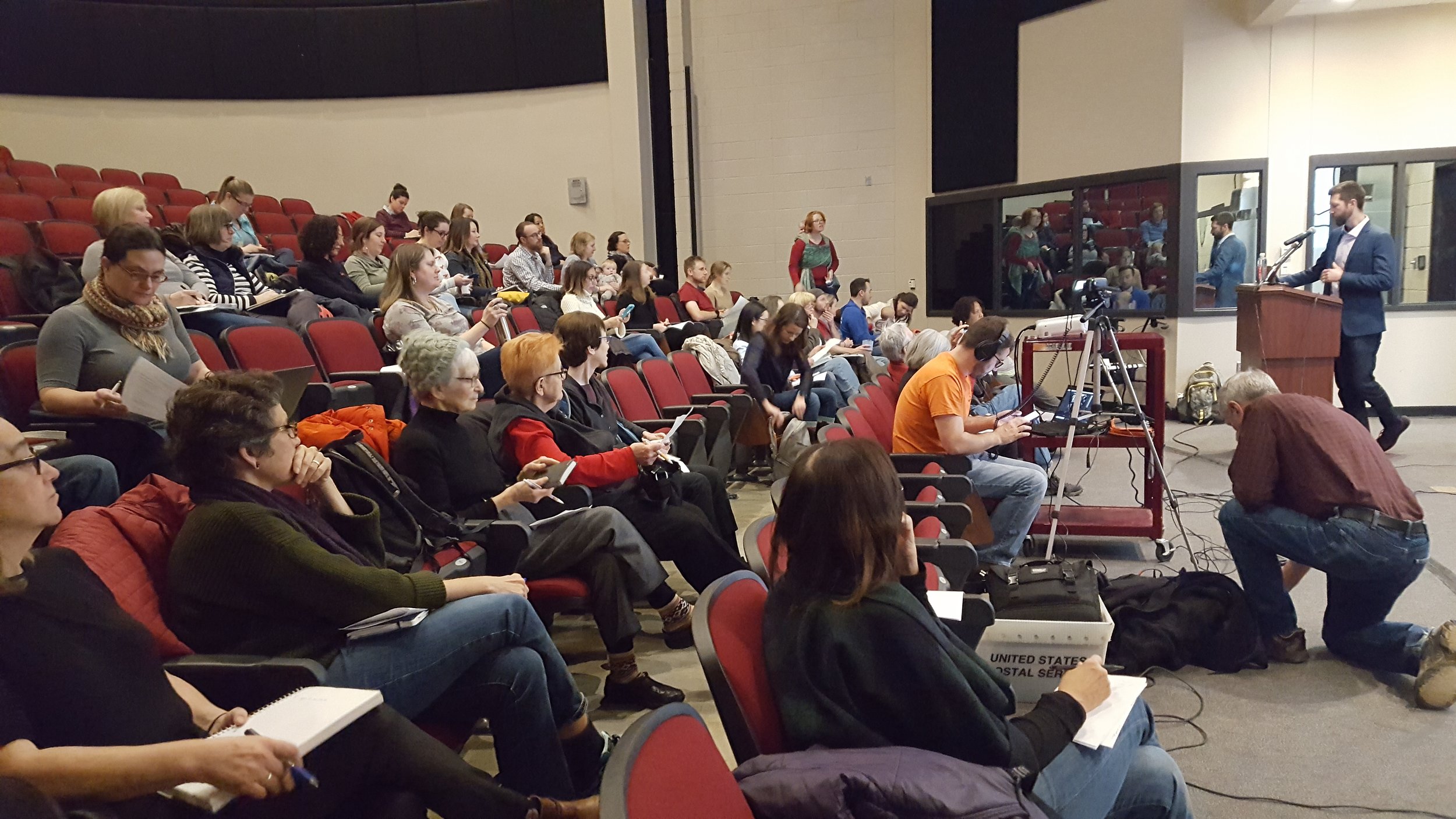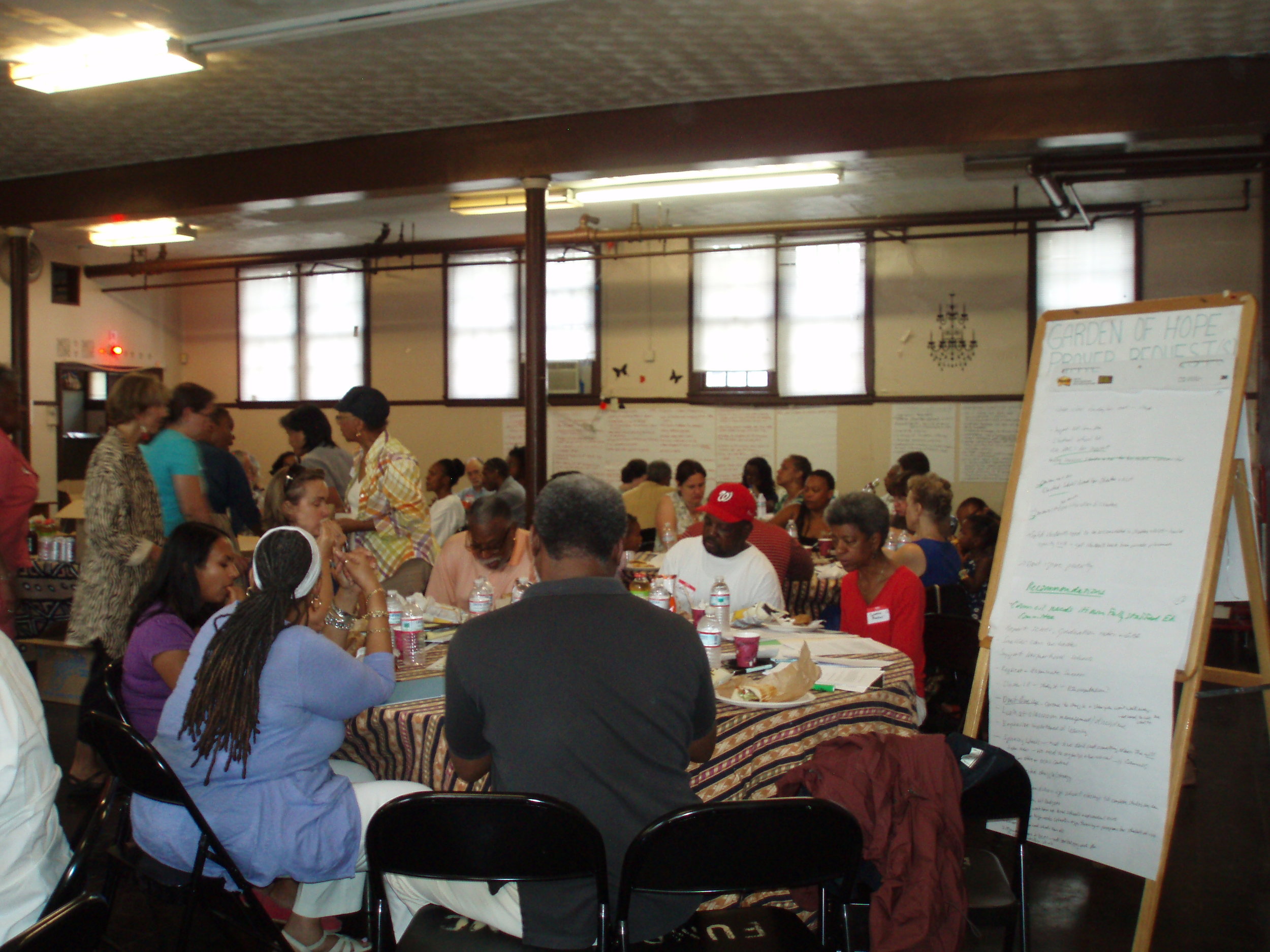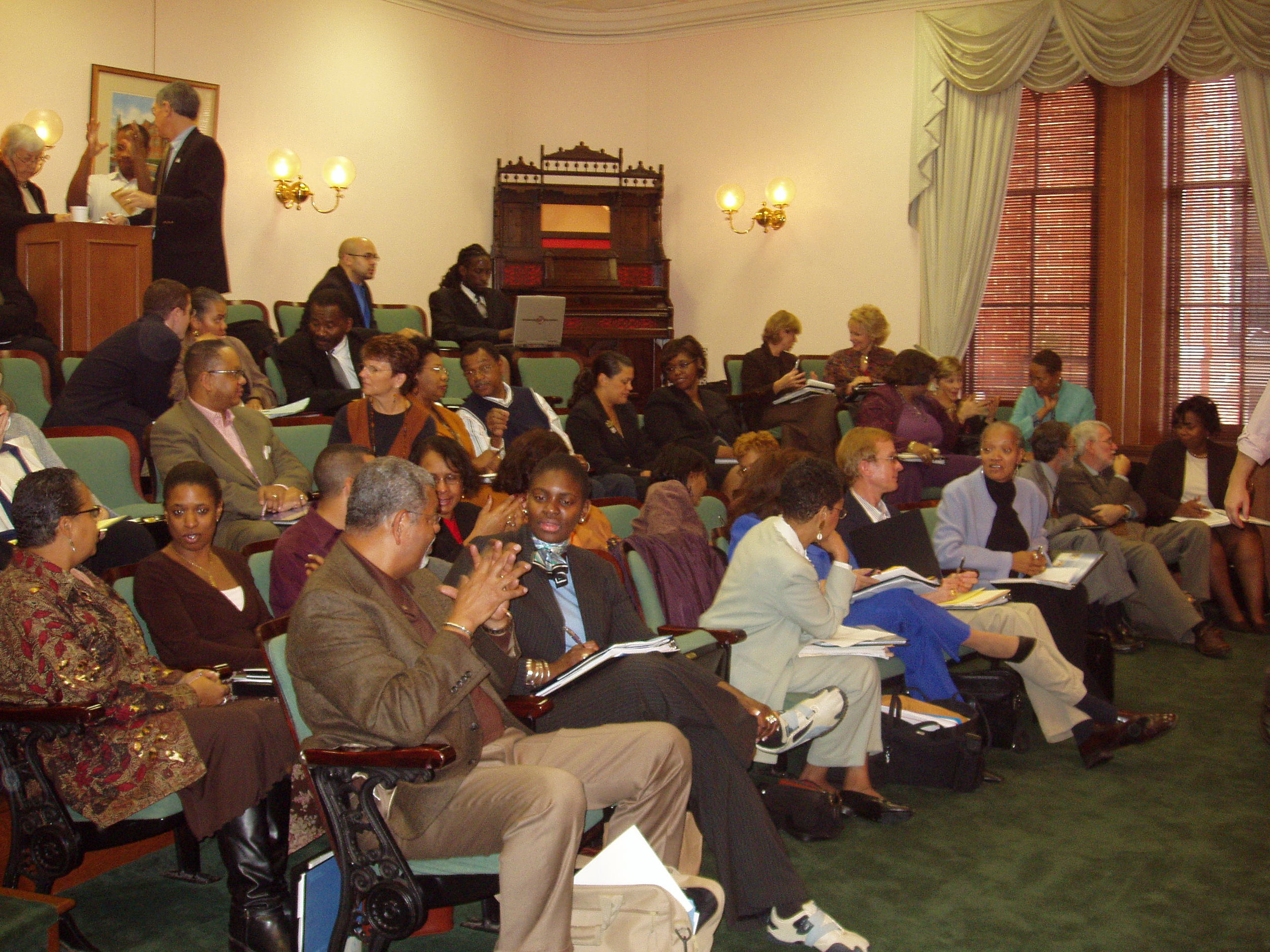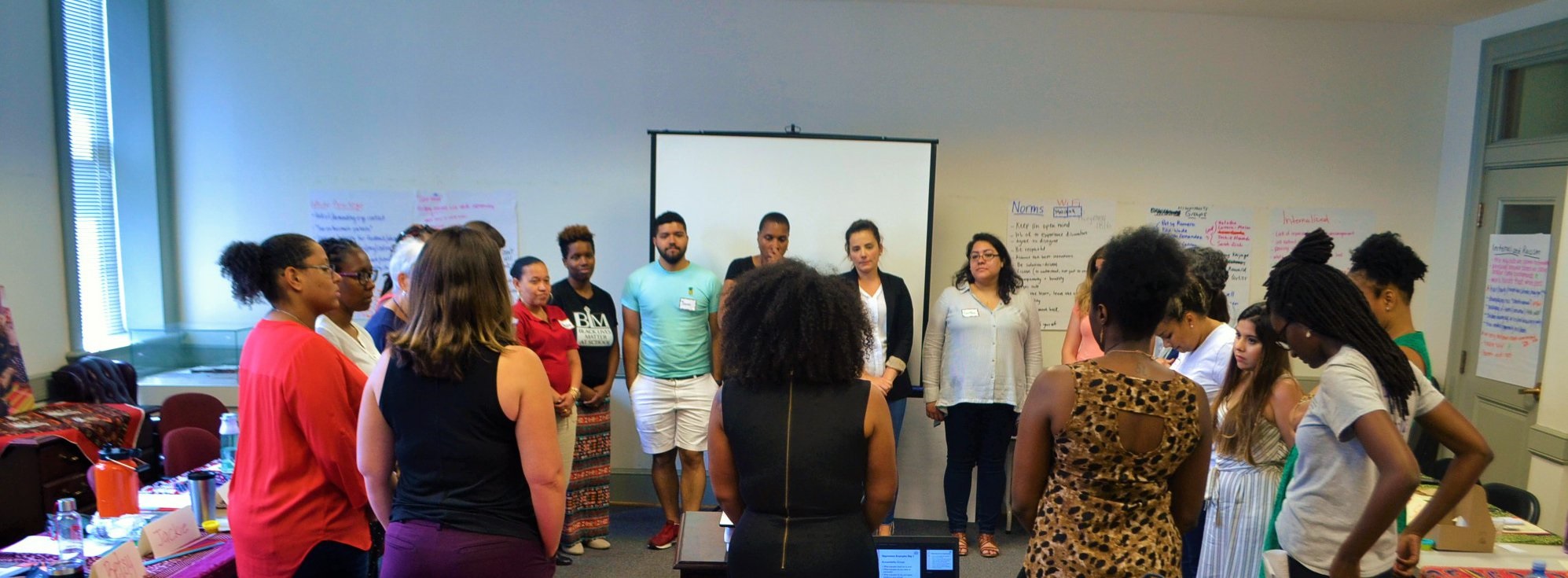BASIS DC Expansion to Elementary Proposal Valerie Jablow
/I am Valerie Jablow, a DC resident commenting on BASIS DC’s application to start an elementary school.
As footnotes in my written testimony outline, BASIS DC has not had for years running student bodies representative of DC’s public school students.[1]
One reason is that BASIS DC has not accepted students after 5th grade—and has severe drop-off of students thereafter.[2] At least one of multiple discrimination complaints to the U.S. Department of Education about BASIS DC suggests that some attrition may be related to Black students leaving.[3]
The application itself is unclear on what grades will be open in the lottery and when. Specifically, we do not know whether the school will limit access to only K, 1st and/or 5th at some point after SY28-29, when it will achieve full enrollment.[4]
This is important to get clear because BASIS DC’s model thus far--of attrition and limited access--has helped skew the school’s population to a majority white and wealthier student body with few disabilities. While the application itself hints that this proposed expansion will provide a reliable feeder system, the graphs of enrollment over time show huge attrition continuing.[5]
Let me be clear: Such limited access and attrition are NOT resource issues but choices of the school itself that effectively ensure a student population more likely to succeed on this school’s terms.[6] It literally prioritizes a school MODEL over students.[7]
As the authorizer of schools that are supposed to educate any DC student, you should be disturbed by this--and by other aspects of this school.[8]
For instance, a 2023 document from the school included in its application states that “we believe we do receive enough applications from at risk families.” So, what constitutes “enough”? Is there a limit, after which there are too many at risk applications?[9]
That same 2023 document also states that “only a fraction” of families who apply “truly and deeply desires what we specifically offer.” So why are other families applying—just for fun? This insulting statement implies this school is NOT intended for everyone—which directly violates the idea of the public schools you oversee.[10]
Please: recognize these serious problems and do not approve this expansion. Thank you.
[1] In SY23-24, BASIS DC had 690 students, of whom <10% were at risk, while the student body was 19% Black and 49% white. In addition, special education students at BASIS DC that year comprised less than 10% of the student body, while English language learners comprised less than 2%. None of this is representative of DC’s public school student population in at least the better part of a century.
Such non-representative student demographics have long been part of BASIS DC—importantly, even when the charter board itself knew about those non-representative demographics and, precisely because of those non-representative demographics, did not look favorably on BASIS DC’s prior application in 2016 to have an elementary.
Read what charter advocates said years ago about BASIS DC’s non-representative student demographics (boldface mine). Here’s Mark Lerner in 2019:
“Across the [DC] charter sector, black enrollment is at approximately 75 percent while at Basis DC High School it is 36.6 percent. In charters in the nation’s capital white attendance is at about five percent while at the Basis High School this statistic is at 39.1 percent. Economically disadvantaged pupils make up 22.1 percent of the student population at Basis while for charters as a whole this number is over 70 percent. English Language Learners comprise approximately eight percent of charter student bodies while at Basis this statistic is at two percent. Finally, Basis High School has a special education enrollment of four and a half percent, while charters see about 12 percent of students requiring Individualized Education Plans. In other words, Basis has been able to shape its student body in a manner that would increase the probability that its student would be able to meet the demands of the school’s rigorous academic curriculum. . . .
“The misalignment of this charter’s population with the rest of the movement has been known for some time and was predicted here when the school applied to open in D.C.”
Here is Mark Lerner quoting charter board member Steve Bumbaugh in 2016:
“[Steve Bumbaugh] revealed that for the last three weeks he had been studying the student enrollment data at [BASIS DC] and he frankly found the numbers to be “concerning.” For example, he discovered that across the charter sector in D.C. 79 percent of students are economically disadvantaged but at Basis this number is 17 percent. Again, he observed, overall for charters 15 percent of pupils are classified as Special Education and at Basis this number is less than five percent. Moreover, at Basis less than 10 percent of kids are found to be At Risk while for charters that statistic is 51 percent. Finally, Mr. Bumbaugh explained that charters are characterized by student populations that include 7 percent English Language Learners while at Basis this percentile is zero. . . .
“The fear that I [Lerner] expressed years ago that Basis would create a school in the nation’s capital that ignored the original charter bargain to take care of those students often left behind by the traditional schools has become a reality.”
[2] Annual enrollment audits along with stats in the school’s annual reports shed light on the school’s attrition rates.
A. Here are mid-year withdrawal rates as reported in annual reports:
SY17-18: 2.3% (14 students)
SY18-19: 2.5% (16 students)
SY19-20: 2.5% (16 students)
SY20-21: 2.9% (19 students)
SY21-22: 2.3% (15 students)
SY22-23: 1.81% (no number of students is mentioned in the annual report, but the audited enrollment showed 663 students enrolled that year, so it seems 12 students withdrew mid-year)
So in a matter of 6 school years, 92 kids withdrew mid-year. That does not count those who didn’t return after a full year. The school does not backfill and, according to historic lottery data, has accepted kids since SY17-18 only in 5th grade.
B. Attrition of students with disabilities appears to be a significant part of BASIS DC’s attrition trend—and even though recent numbers of SWDs at BASIS DC are very small, the percentage attrition of SWDs at the school is high.
For instance, on p. 431 of the application, part of the “Space 2025 Goals” notes that “26% of Students with disabilities withdrew (SY20-21 to 21-22)” and “23% of Students with Disabilities Withdrew (SY21-22 to 22-23).”
Backing out from enrollment data, we can say that 5 students with disabilities (SWD) withdrew each of those times (26% of 19 SWD for SY20-21 and 23% of 20 SWD for SY21-22). That also means that for each of those years, SWDs comprised a very small percentage of the student body (SY20-21: 19 out of 664; SY 21-22: 20 out of 650).
(NB: These are not exact numbers because SWDs are not reported in exact numbers publicly because of data suppression of numbers lower than 10. However, OSSE audited enrollment data makes clear that overall, SWDs have been and continue to be a very small percentage of BASIS DC’s student body.)
As long ago as 2013, the charter board rejected the school’s expansion plans because of the high withdrawal rate of SWDs.
C. I made a few charts of attrition at BASIS DC by year and by cohort, using audited enrollments of the last few years.
Here is the one showing attrition by school year:
Here is the one showing attrition by cohort (student numbers are on the left axis):
These charts align closely with one in the BASIS DC application here, from p. 443, showing high drop-off of students year after year:
All these charts show one thing very clearly:
Student attrition is THE education model for BASIS DC.
Even as this school considers itself valuable (as its application here repeatedly outlines), it is not offering more seats even when it could. Thus, the vaunted value of BASIS DC is not accruing TO all DC students, but IN SPITE OF all DC students.
[3] In 2019, DOE began investigating the school for potentially discriminatory discipline practices as well as potential employment discrimination. Writing about that 2019 investigation, Advocates for Justice and Education opined that “BASIS DC has created a culture that discourages students of color from enrolling or remaining in the school.” (This DOE investigation is apparently ongoing.)
Sadly, this case represents only one set of allegations and investigations at BASIS DC. For instance, in a 2013 finding, the US Department of Education (DOE) determined that BASIS DC discriminated against students with special education needs as well as English language learners and ordered changes. (Here is a news story.)
Then, starting in 2017, DOE apparently also investigated BASIS DC for not providing a free appropriate education (FAPE) and Title VI violations.
[4] The charts on p. 22 of the application provide some insight:
That said, regardless of “conservative” or “preferred” growth, it appears that with this expansion BASIS DC will continue to limit enrollment in its middle and high schools (note the static 135 students at 5th grade in both models as well as the sharp decline in enrollment thereafter, culminating in graduating classes of 47-70 students each).
Related:
Well ahead of writing this testimony, I emailed charter board staff to ask two questions: what are the parameters to determine which growth model (preferred v conservative) will be chosen by BASIS DC AND will BASIS DC continue to limit access to its seats by way of funneling entry at only K, 1st and/or 5th at some point in the near future (ie after SY28-29)? If so, what are those grades and when will that occur? (Here for the record is the original email chain.)
This is the reply I received, from which I understood that neither the public nor the charter board would necessarily know answers to those questions before the school’s approval and that it was up to the school to decide those things. I used this response as the basis of some parts of my testimony here.
Yet without my knowledge these two questions of mine, and the charter board response, were memorialized in the public feedback section of the materials for the June 24, 2024 board hearing for BASIS DC!
Specifically, the two questions and the answers were put into a new document that is listed on the public feedback website as MY feedback OPPOSED to this expansion! In fact, it looks like I am answering my own questions (!), since my name is attached at the end of the answers.
The fact that two perfectly reasonable questions were considered by the charter board to be feedback (and in opposition to this application!) is extraordinary. It appears to betray some level of contempt for the entire idea of public feedback.
[5] See the footnote immediately above.
[6] The correlation of student household income with test scores is long established—as is the fact that BASIS DC touts its high test scores as evidence of educational success.
How this works in BASIS DC is clearly outlined in DC education researcher Betsy Wolf’s blog post, which alludes to a survey (p. 87ff of the application) that BASIS conducted of prospective families. As Wolf notes, that survey showed that “the best predictor of interest in BASIS was parental education attainment, specifically parents with advanced degrees “who are seeking K-12 schools that will set their children up for similar future academic success”.” (See p. 14 of the application.)
[7] Sadly, BASIS DC is not alone in this among DC’s publicly funded schools. A recent survey of publicly funded schools around the country (including some in DC) around their willingness to accept an older immigrant student indicated that most would not, including BASIS DC. A DC council member excused such potential illegality by noting “constraints” around DC’s publicly funded charter and selective schools in accepting students mid-year.
In reality, the only “constraints” for DC’s publicly funded schools in accepting students at any moment are those imposed by DC school operators.
ALL DC’s publicly funded schools are empowered to decide when and how to pull from their waitlists. Literally NO agency in DC is prioritizing the enrollment of all students at all times. (We could--but we don’t.) As a result, students like this one will not be served always or sometimes ever (even when the law demands it) because we prioritize the freedom of school operators over the legal education needs of students.
[8] Time restrictions for public testimony before the charter board are the only reason many more egregious statements and implications in the current application of BASIS DC are not being verbally aired. For example:
--On p. 7 of the application, the school notes that “we believe strongly that our K-12 educational programs should be available for any family and any student who wants to work hard and succeed.”
Besides the implication that students are NOT working “hard” if they are not “succeeding,” there are many disturbing questions this statement raises:
What is “succeeding” in this context: doing calculus at age 12 or reading at a 4th grade level at age 12 after reading a year earlier at a kindergarten level?
What about students who are “succeeding” in this definition and NOT working “hard”?
Are students who are working “hard” and not “succeeding” (however it is defined) not worth the trouble of this school?
--On page 242 (Appendix D) of this application, BASIS DC outlines “property acquisition” in December 2023 through June 2024 for this new elementary. So: now that we are less than a week from the end of June, does BASIS DC have a property for this elementary school?
More importantly, how does a publicly funded charter school have enough money to move ahead on spending significant resources on real estate without any assurance that such an expenditure is even needed? A significant portion of the revenues of BASIS DC come from DC taxpayers, who without any say whatsoever in the endeavor are apparently underwriting a real estate venture that until it’s approved will remain speculative only.
It seems silly to have to say this, but here we are:
Allowing private organizations to use public dollars to underwrite their speculative ventures (and without any public scrutiny!) doesn’t fulfill any educational goal in DC.
--The application implies that BASIS DC has not yet reached out to anyone in the public domain about a location for this elementary. That is wrong.
On June 7, 2023, the head of BASIS DC gave a presentation to an ANC6C committee about locating a new elementary school in the ANC. The presentation did not reveal exactly where the school would be, but said the school had 50 families in the ANC and was looking at 300 I NE, behind the Giant grocery. The presenter said the school was intended for “nerds.”
However, the BASIS DC board minutes from August 2023 show that the school was looking to possibly take over an existing elementary because that 3rd and I NE location became unviable. What existing elementary, and where, remained publicly unspoken. SO: Is this still being considered and, if so, which elementary?
--On p. 442 of the application, in the document on space 2025 goals, there is the following statement: “We are one of the top ten most diverse schools in the city, and we are proud of that!”
Given the school’s history of non-representative student demographics, what metrics are being used as the basis for saying this truthfully? Is the touted diversity simply that of the wealthier students without disabilities who have for at least a decade formed the majority of the school’s student population?
--On p. 6 of the application, it says that “BASIS DC has been a sector leader in teacher retention, with typical retention rates over the last five years that are approximately 10% higher than in other charter schools.”
Yet p. 4 of the application suggests high staff turnover by noting that “internal recruitment data . . . shows an average of 40 new applicants for each new filled position, with a total of over 2000 applicants for just over 50 positions hired.”
As shown in annual reports, here is BASIS DC’s annual teacher attrition at its single location:
17-18: 36.95%
18-19: 18.8%
19-20: 27%
20-21: 13%
21-22: 26%
22-23: 38%
Even if these are the numbers of a “sector leader in teacher retention,” they do not paint a pretty picture.
--On p. 228 of the application (in appendix D), it states that “school should be hard and joyful.”
What does “hard” mean in this context: a child reading several grade levels below her grade who may be attempting to read at grade level?
Or is “hard” a child with years of advanced math doing calculus or algebra?
And what happens when “hard” makes “joyful” impossible?
[9] This was stated in a September 2023 communication from the school to families, specifically on p. 283 of the application to the charter board. The communication was about the equitable access preference in the DC school lottery.
[10] This document is the September 2023 communication to families, included on p. 284 of the application.

